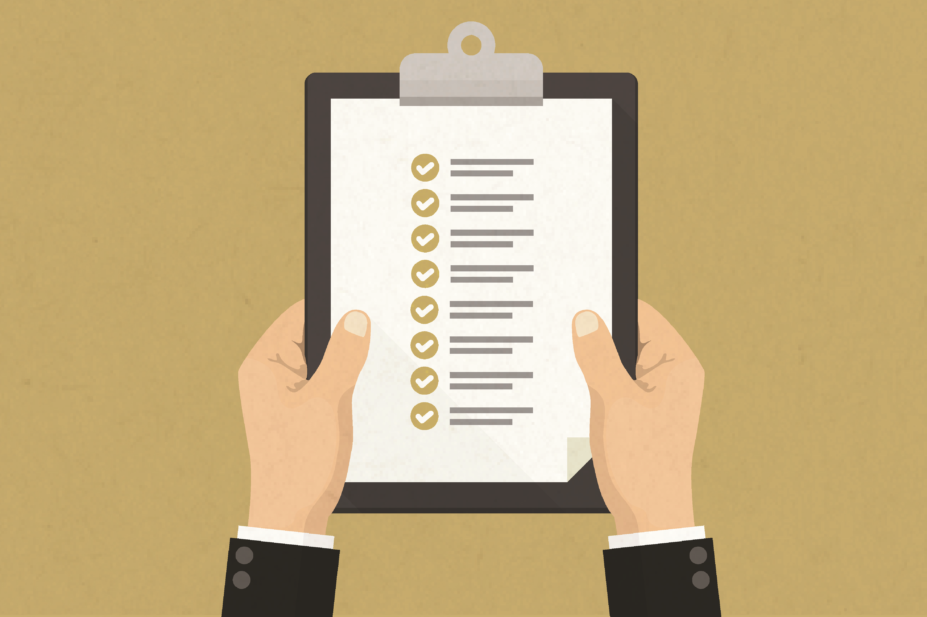
JL / The Pharmaceutical Journal
In 2018, pharmacists and pharmacy technicians joined doctors, nurses and midwives in being expected to undergo the revalidation process, demonstrating their continuing competence and fitness to practise.
Revalidation was first proposed by the government for all registered healthcare professionals ten years ago in response to the inquiry into Harold Shipman, a former GP who is believed to have killed around 250 of his patients. Doctors were the first to revalidate in 2012, followed by nurses and midwives in 2016. And in 2018, it is now the turn of pharmacists and pharmacy technicians. This process is managed by the General Pharmaceutical Council (GPhC), which regulates pharmacists, pharmacy technicians and pharmacies in Great Britain.
In essence, revalidation requires pharmacy professionals to submit various pieces of work to demonstrate that they are keeping their skills up to date. As a newly qualified pharmacist, you will need to revalidate each year. Here are our top tips to help you prepare for revalidation.
Revalidate each year
Annual revalidation is a mandatory obligation to stay on the GPhC register. Your experience of revalidation will depend on when you joined the register. You will receive tailored advice from the GPhC to explain what you need to do, how many records you need to submit and by when. Revalidation is being rolled out in two phases over two years, and is expected to be fully established by 2020.
Track and document your learning
Depending on when you qualified, you will have to complete either four or six continuing professional development (CPD) records to revalidate. CPD refers to the process of tracking and documenting the skills, knowledge and experience gained both formally and informally as you work beyond your initial training. It is a record of what you experience, learn and then apply.
The records need to reflect the breadth of your practice, contain factual examples from the previous 12 months and comply with patient confidentiality
The GPhC will write to you to advise you of dates for submission of your revalidation records and how many records you need to submit. You will then submit your revalidation records, as well as renew your GPhC registration and make your declarations to illustrate that you are keeping your skills up to date at www.mygphc.org.
During the first year, anyone who has been on the register with renewal deadlines from 31 October 2018 to 14 October 2019 needs to submit four CPD records for their first revalidation. Anyone who will renew their registration for the first time after those dates will need to submit all six revalidation records.
Records required for revalidation include:
- CPD records;
- A peer discussion record;
- A reflective account record.
Use templates
The revalidation CPD records each have a given template, each of which has specific instructions detailing what to write about.
Templates can be found on the GPhC website at: https://www.pharmacyregulation.org/revalidation-resources-pharmacy-professionals#forms
The correct number of records need to be submitted on the right forms at the right time. The records need to reflect the breadth of your practice, contain factual examples from the previous 12 months and comply with patient confidentiality. Your CPD records should be concise. You do not need to write an essay for each record.
Know the difference between planned and unplanned learning
Whether you complete four or six CPD records, at least two must be a planned entry and a maximum of two can be an unplanned entry.
Continuing professional development must demonstrate how your learning has altered your practice and benefitted the people who use your service
A planned learning CPD is when you decide to develop your knowledge and/or skills in advance of carrying out the learning activity. An unplanned learning CPD is when an event happens that causes an unscheduled learning activity without prior thought or planning, for example through reading a journal or talking to a colleague.
Demonstrate the effect on your practice
CPD must demonstrate how your learning has altered your practice and benefitted the people who use your service.
Select a peer and reflect on your learning
Depending on when you need to revalidate for the first time, you may also need to supply a peer discussion record and a reflective account record, in addition to four CPD records. As with the CPD records, peer discussion and reflective account records have specific templates that you need to use. All records must cover the previous 12 months and cover your breadth of practice.
The peer discussion record is a learning and development activity that encourages you to engage with others in your reflection on learning and practice. To be most effective, these discussions should be designed to aid your development. They should be an open and honest discussion with someone who you trust and respect.
The reflective account record encourages you to think about how you meet the GPhC standards for pharmacy professionals in the work you do. Evidence suggests that producing a reflective account that focuses on these standards increases awareness and understanding of the standards and helps you reflect on how your practice affects the people using your services.
Keep your records up to date
The GPhC may randomly select you to review your records. They will be checking to see if you have met certain criteria. If you do not meet the standards you will be advised of a remediation process. Ultimately, if you do not comply with this process you could be administratively removed from the register. But you will remain on their register if your records meet the GPhC’s core criteria.
Utilise the support services offered by the Royal Pharmaceutical Society
The Royal Pharmaceutical Society (RPS) can offer support to pharmacy professionals throughout the revalidation process. RPS members have free access to a professional support team to answer any questions, such as: “I go on maternity leave in three months — what do I need to do?”; “How can I find a peer for my peer discussion?”; or “How many records do I need to submit in my first year when I qualify?”.
Use RPS resources
As the leadership body for pharmacists, the RPS has a wealth of useful information relating to revalidation, including webinar recordings, sample records, FAQs and prompt sheets. For more information, visit: www.rpharms.com/revalidation. RPS members can use the RPS website to view the revalidation record templates, as well as practise creating actual records on RPS MyCPD. Non-members can register on the RPS website to practise creating records too.
The RPS MyCPD app is designed specifically for revalidation. It contains more than 100 pieces of learning, most of which is peer reviewed. It has all the record templates and you can export the completed records to your email address. Non-members can register for a free seven-day trial of the app — for more information, visit: https://www.rpharms.com/7dayfreetrial.
During 2019, the GPhC is aiming to enable a direct connection between the RPS MyCPD and the GPhC systems. This would enable users to create records with the RPS and send them directly to the GPhC to revalidate. The advantage of doing this would be because the records you create on the RPS MyCPD (app and website) will be stored for life, whereas the GPhC will delete your revalidation records after two years.

About the author
Janet Till is programme manager for revalidation, innovation and enterprise at the Royal Pharmaceutical Society.


